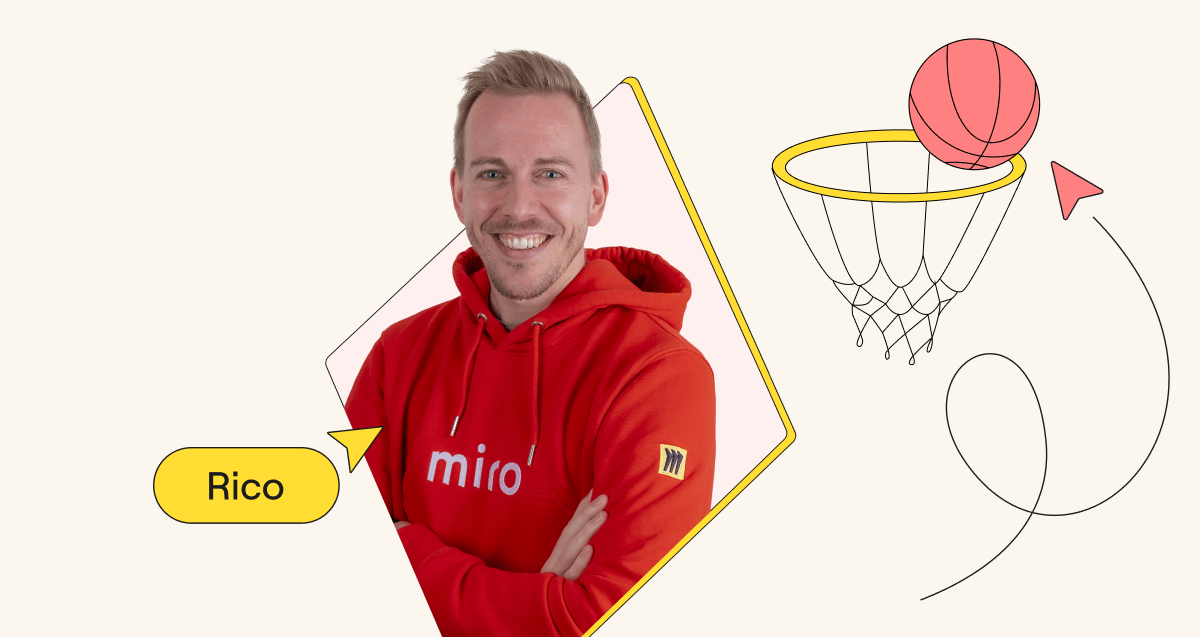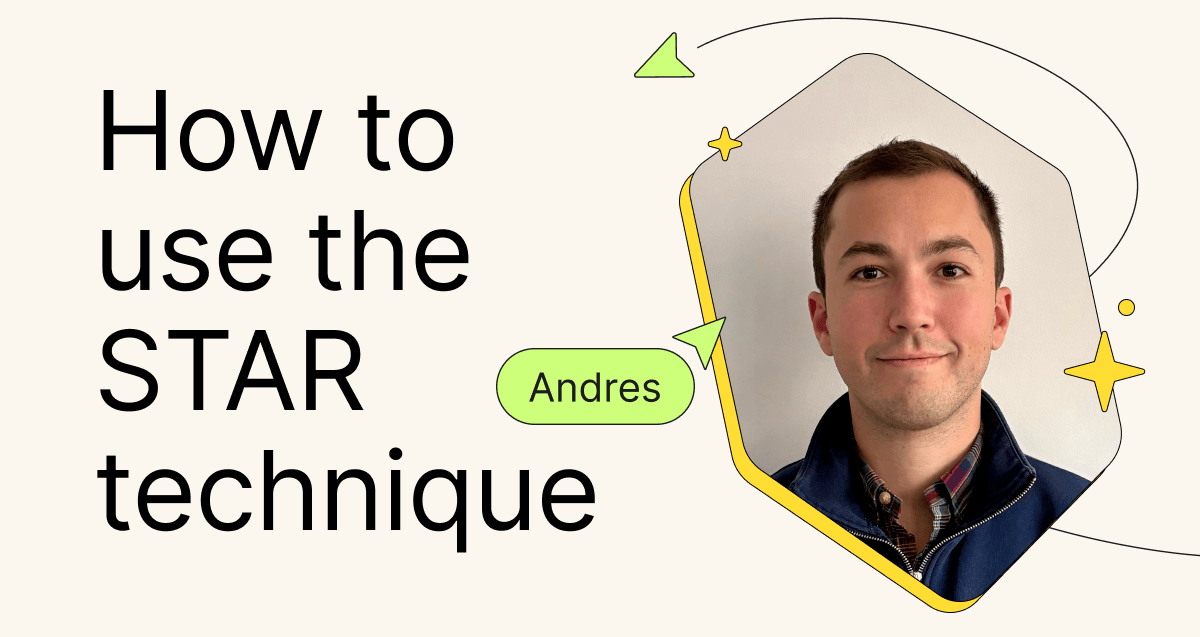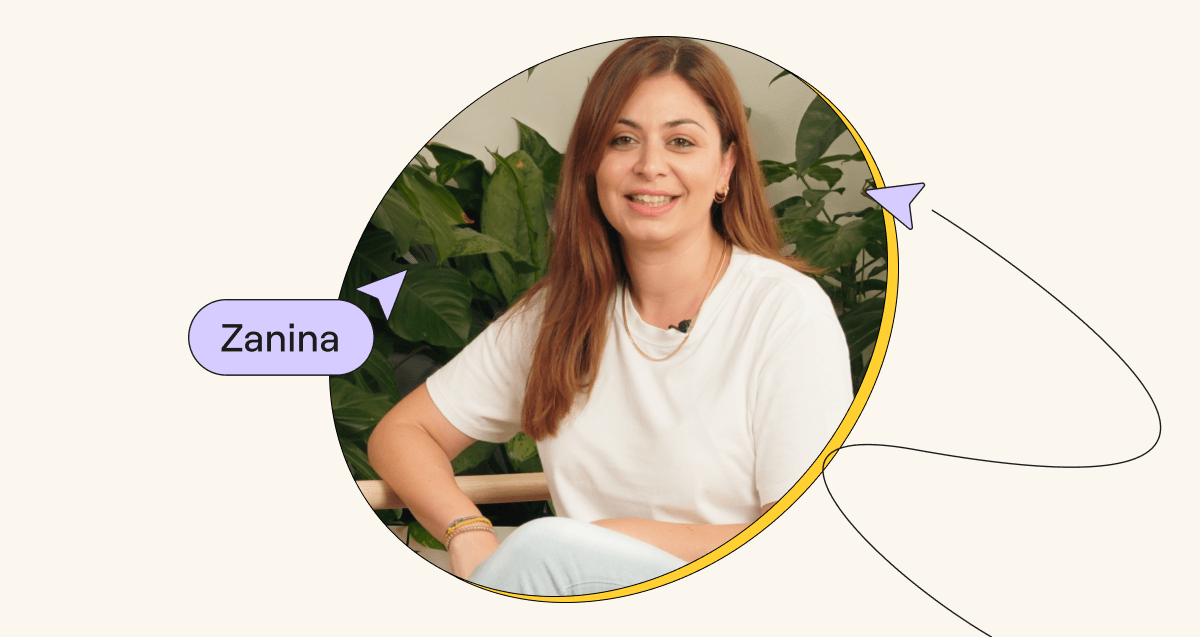Preparing for an interview can present a mixed bag of emotions. On the one hand, you get the chance to connect with a potential employer and learn more about a new opportunity. On the other, the interview process can be daunting, present you with uncertainty, and force you to confront countless rejections.
I’m Rico, a Technical Recruiter at Miro. Throughout my career I’ve led hundreds of interviews, and have seen first-hand the mistakes that candidates make, as well the the things they do that make them stand out and sail through to the next round.
In this article I will guide you through the two types of interviews you’ll typically encounter both at Miro and other companies – the recruiter screen and hiring manager interview. I’ll share my best tips for how to figure out if it’s a good fit, make the most of your limited time, and clearly communicate your value so you can snag that next job.
The recruiter screen
First up, the recruiter screen. This interview is an opportunity for you to make a good impression, gather some early stage information, and make sure your interests, experience, and salary expectations are aligned with what the organization has to offer. Here at Miro, we use the recruiter screen in our interview process to understand:
- Why is someone considering leaving their current employer to join Miro.
- What someone is looking for in their next role (and if this is something we can provide).
- How much they already know about our company and the product.
- How well their experience would fit the needs of the team the recruiter is hiring for.
To be successful in this early stage and make it to the next round, I’d suggest the following:
1. Research the company
While this may seem obvious, it can be easily overlooked, especially when you’re applying for several different positions. Before speaking to a recruiter, do your research to understand:
- What the company does: Look through their website, research their product(s) or services, or test out any free accounts that they offer. We don’t expect you to be a super-user of our product, but any recruiter will be happy to hear they can skip the basic product pitch and dive into more in-depth questions.
If you were interviewing at Miro, you could find out that we help 60+ million global users to communicate, collaborate and innovate through visual collaboration. Our mission is to empower teams to create the next big thing. (Psst, you’d be able to find all this information on our company story page.)
- Their company values: Knowing these will help you determine whether you share these values, and whether at first glance there’s a fit regarding company culture. At Miro, we have an entire page dedicated to our company values.
- Company growth and achievements: Review any news articles or media coverage to get a better understanding where the company is in terms of their maturity, number of employees and whether they have already achieved a good product-market fit.
- What people are saying about them: Look them up on sites like Glassdoor, Indeed, or Blind to see what their employees are saying. This can give an indication of a company’s improvement areas or growing pains and can be interesting points to bring up to your recruiter.
Taken all together, you can get a sense for what the company might be like as an employer. Using these insights, you can begin crafting your candidate story. For example, here at Miro we look for authenticity, problem solving, and collaboration. Knowing this, candidates interested in working at Miro can put that kind of lens on their answers during the interview.
2. Practice answers to common questions
While you can’t fully predict what questions will be asked, you can almost guarantee that the following questions will come up in a first interview:
Can you give me a short introduction of yourself?
Pro tip: Short actually means short! We already have your resume in front of us, so use this quick introduction to cover basic things like:
- Who you are
- What role you are in right now,
- What you are looking for next
- Why you’re looking for your next role
- What tech stack you are using (for engineering)
For example, you might say, “I’m a Senior Backend Engineer with 10 years of experience working in the financial and technology industry. I have been mostly using Java and Kotlin and right now my projects have been delivered and turned from problem solving to maintenance. I’m looking for a technically complex challenge that I have to help build from scratch.”
Give the recruiter a snapshot of who you are, and let the recruiter come up with follow-up questions from there.
Why are you looking to leave your current position?
Pro tip: There’s advice that you should never say anything negative, but I disagree with this. If you go this route, be mindful of the way you mention having a bad experience with a previous employer, and approach the topic with maturity and self-reflection. Or go the positive route, and talk about the growth opportunities you see for yourself in this new role.
What are your salary expectations?
Pro tip: Different advice exists for how to best answer the question of salary expectations. Do your research to understand what similar roles and similar companies are paying, including interviewing for the same role in a different company to understand what the market is offering. Then be transparent with your recruiter around your salary expectations – we want to find a fit between what you’re expecting and what we can offer, and we will be upfront if there’s a mismatch. Remember that additional benefits and even equity (stock) are part of your total compensation, so make sure to discuss this too.
What are the three most important factors that will make you accept an offer?
Pro tip: This is a bit more unconventional than the other three questions listed here, however I think it gives the recruiter a strong indication of what matters most to you, and what you hope to find in your next role.
It’s a good idea to think about this question since it will impact what extra information the recruiter and hiring team will give you throughout the interview process, as they keep these factors in mind. An example of motivating factors can be growth, challenge, change, and even fair compensation.
Practice writing out all your answers, and then say them out loud. Your answers should be concise and give a clear picture of who you are and why you’re worth putting through to the next round.
3. Review your resume
Your resume tells a story about your career, whether it has been a linear path or a bumpy road. Us recruiters are usually pretty good at reading between the lines, but we also want to get our facts straight. In this stage we will often point out areas that are unclear on your resume. During your interview preparation, review your resume and ask yourself:
- Are there any gaps in my career path that have a simple explanation?
- What impact did you make in each of your experiences and can you come up with specific examples for them?
- What important lessons did you learn from each job?
Recruiters don’t need you to read what is written on your resume. Rather, we want to hear the story that connects the dots.
4. Ask meaningful questions
This is an opportunity to put your best foot forward and make a lasting impression. Be conversational, be friendly, and be confident. Most importantly, demonstrate your interest and enthusiasm by asking meaningful questions at the end.
Questions you can ask at this stage can include:
- How would you describe the culture?
- Why is this position open?
- What are you looking for in a candidate?
- What do you see as some challenges for the person coming into this role?
- What does the growth path look like for this role?
The answers to these questions will show the interviewer that you’re curious to learn more. They will also help give you insights on whether the role is right for you.
Meeting with the Hiring Manager
If you get invited to the Hiring Manager interview, you’re doing great! This round usually has the person who will be managing you directly as the interviewer, so it is important to get a good sense of who they are and vice versa.
To prepare, repeat all the steps outlined from the recruiter screen. Review your interview preparation notes, and get ready to dig deeper into each of your experiences.
To do this, I’d suggest following these interview preparation tips:
Prepare and anticipate answers to difficult questions
Here, the interviewer will be trying to get deeper insights into your experience. They will want to understand how you might fit into their team and culture. Here’s how you can do this:
Speak to your recruiter
As a recruiter, we’re rooting for you to fill the position! You can ask your recruiter what areas of the job description the hiring manager interview usually covers. If you are interviewing at Miro you can expect your recruiter to be with you throughout the process, preparing you for the next interview, and giving you direct feedback from your interviewers. We’re on your team, so use us!
Match your experience to the job description
Go line by line on the job description, and think about an example where you’ve demonstrated the skill, ability, or task listed. If you’re unsure of a time you’ve ever done something similar, speak to a colleague or friend and ask them if they can share any examples. This may help jog your own memory or give you ideas. If you’ve never done something listed in the job description, think of how you would do it and share that instead.
Use ChatGPT
ChatGPT is a great way to help you anticipate what kinds of questions might come up in the interview. You can input the job description and ask ChatGPT to come up with common interview questions related to the job description. Take it one step further and ask for the answers too. Of course you should never use the answers verbatim, but this can serve as a great brainstorming tool to help you organize your own examples.
Use the STAR method
When you’re under pressure, it can be difficult to properly articulate the value and importance of your work. In an interview, you need to be able to communicate and show how you directly impact results. This is where the STAR method can help keep you from rambling and going on a tangent. The STAR method stands for Situation, Task, Action, Result.
When answering a question about your past experience, you should form your response in a way that follows the STAR method. For example, let’s say your interviewer asks you to share a time when you had to improve an existing process. Using the STAR method, you could answer:
Situation: In my previous company, we were not able to hire engineers successfully because nobody was passing the team round interview.
Task: I was tasked with fixing this process and increasing our chances of hiring engineers.
Action: First, I looked at our data and indeed saw that our pass rates were hovering between 15-25%. I then looked at the scorecards with interview comments and saw there was no context on why. Finally I spoke to the interviewers and realized they had no formal interview training, and were relying on their gut feeling rather than evidence-based experience. Together with the hiring manager, we created a rubric with interview questions and potential answers to enable the interviewers to make better assessments.
Result: After the next interviews, the interviewers were happy they could rely on objective measures, our pass rate increased to 75% and we were able to meet our quarterly hiring goals.You can’t always add specific metrics to your examples, especially if a soft skill is being assessed, but when you can, it’s always good to add them.
Manage your mindset
Equally important to your work experience is the mindset and attitude you bring to the job. Your belief in yourself and your own abilities can either limit you, or send you to great heights.
When going through the interview process, monitor the running dialogue in your head and make sure the voice you hear is positive, encouraging, and supportive.
If you notice any limiting self beliefs brewing, leave yourself time between interviews to practice your mindfulness routine and show yourself some love.
Some helpful words to remind yourself during this include:
- You’ve made it to the interview for a reason
- All it takes is one person to give you a chance
- You’ve got what someone needs
- Every rejection brings you closer to the right job
Job searching and interviewing often leaves you open to vulnerabilities, rejection, and can be emotionally taxing. Be kind to yourself, celebrate your wins, and encourage yourself as you would a best friend.
It’s a marathon, not a race
Here at Miro, our hiring process can have up to five interview stages, depending on the team you’re meeting with. Each team has their own process, and can include stages like live coding, cross-functional meetings, business cases, or leadership rounds. You can see an overview of the process for the different teams at the bottom of these team pages:
Prepare yourself ahead of time for each stage of the process, and think about what skills you’d like to display in each of them.
Finally, remember that no matter where you are in the interview process, or who you’re meeting with, it’s always important to be your authentic self. You’ll shine your brightest when you’re being true to yourself, and you’ll connect with the right employer who values you. Good luck!






